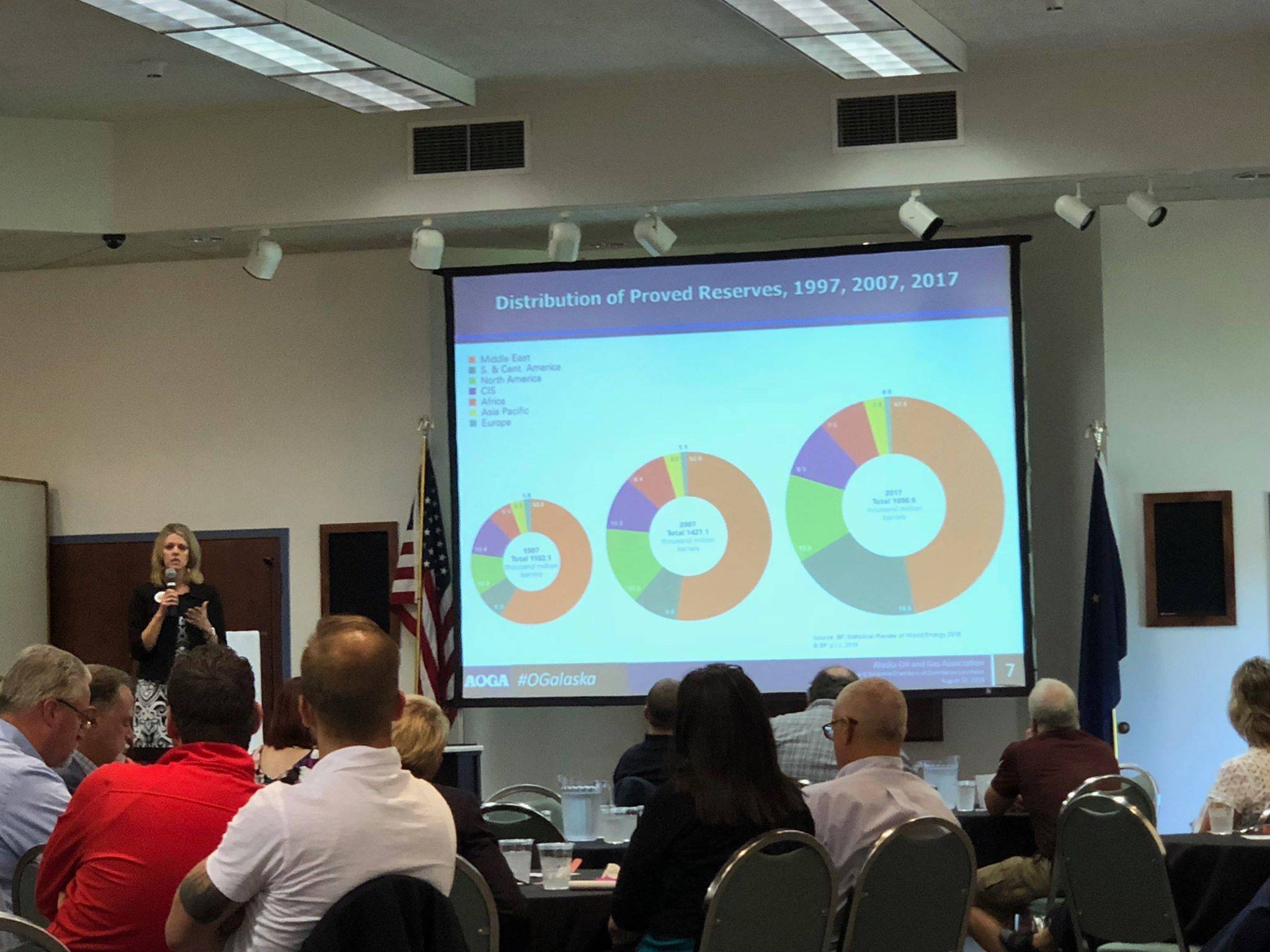Wednesday’s joint Chamber Luncheon hosted CEO and president of Alaska Oil and Gas Association Kara Moriarty, who offered an update on the industry.
Although production of oil and gas continues to decline, Moriarty said consumption is increasing and that demand for these resources is still present.
“(Oil and gas) still dominate the revenue stream, even as production continues to decline,” she said.
Moriarty offered an optimistic outlook on the future of oil and gas in Alaska and specifically in the Kenai Peninsula region, noting that the industry currently provides thousands of jobs for the area. She said that just over 100,000 jobs in the state can be traced back to the industry, and over $6 billion in wages, according to the McDowell Group in Anchorage.
“We have some in Alaska that are saying that the era of oil is over,” Moriarty said. “We would disagree with that and the statistics and forecast would prove that.”
On a global scale, between 1997 and 2017, oil and gas reserves have grown by over 50 percent, according to BP Statistical Review of World Energy 2018. The U.S. Energy Information Association said the 2040 forecast for energy consumption shows petroleum continuing to grow.
“If you combine petroleum and natural gas, over 58 percent of the globe’s energy is still going to come from those two traditional sources of fuel,” Moriarty said.
On a local level, Moriarty said that Alaska still has oil and gas reserves to explore, especially in Cook Inlet with a forecast of around 600 million barrels of oil and 19 trillion cubic feet of gas, according to United States Geological Survey.
“So that’s good for your own backyard,” she said.
The North Slope may be on the brink of new production. Moriarty highlighted several projects to keep an eye on, including the Liberty project, which she said holds an estimated production value of 60,000 barrels a day, compared to the current production on the North Slope, which is a total of 520,000 barrels a day.
“We’re on the cusp of a new renaissance on the North Slope,” she said.
Looking ahead, Moriarty said the Arctic National Wildlife Refuge was the next generation of oil and gas production in Alaska.
While the Alaska Oil and Gas Association painted a bright future for oil and gas in Alaska, present production has room to improve. In the U.S., Alaska is fifth in production of oil and gas behind Texas, North Dakota, New Mexico and Oklahoma, making up only 5 percent of the production, according to the U.S. Energy Information Agency.
Moriarty suggests more investment and more stable policy will improve Alaska’s oil and gas industry.
“We need investment,” she said. “Projects in Alaska are more capital intensive. Fields in the Lower 48… you can ramp them up fast, and ramp them down fast. It’s more of a challenge here.”
When it comes to taxes, she said she supports a stable tax regime. In the last 13 years, there have been seven changes to the state tax policy. AOGA has supported two of those changes.
Moriarty also spent time discussing Ballot Measure 1, which she said if it passes, will impact all current oil and gas projects, and those to come by increasing costs, time and make it challenging to permit projects.
“It will absolutely not only have an effect on oil and gas projects…” she said. “It will be a dealbreaker for (the liquid natural gas project).”
Moriarty ended her industry update discussing climate change and Alaska’s decrease in greenhouse gas emissions.
“Climate change is happening,” she said. “There’s no doubt about it.”
Emissions in Alaska make up less than 1 percent of U.S. greenhouse gas emissions, according to the Alaska Department of Environmental Conservation.
“We also have to put into context that if we stop burning greenhouse gases and emissions today, it would not make a dent in the global problem,” she said. “Climate change is a global problem and we advocate it should be dealt with on a global, or at the very least, on a national level.”
Reach Victoria Petersen at vpetersen@peninsulaclarion.com.

